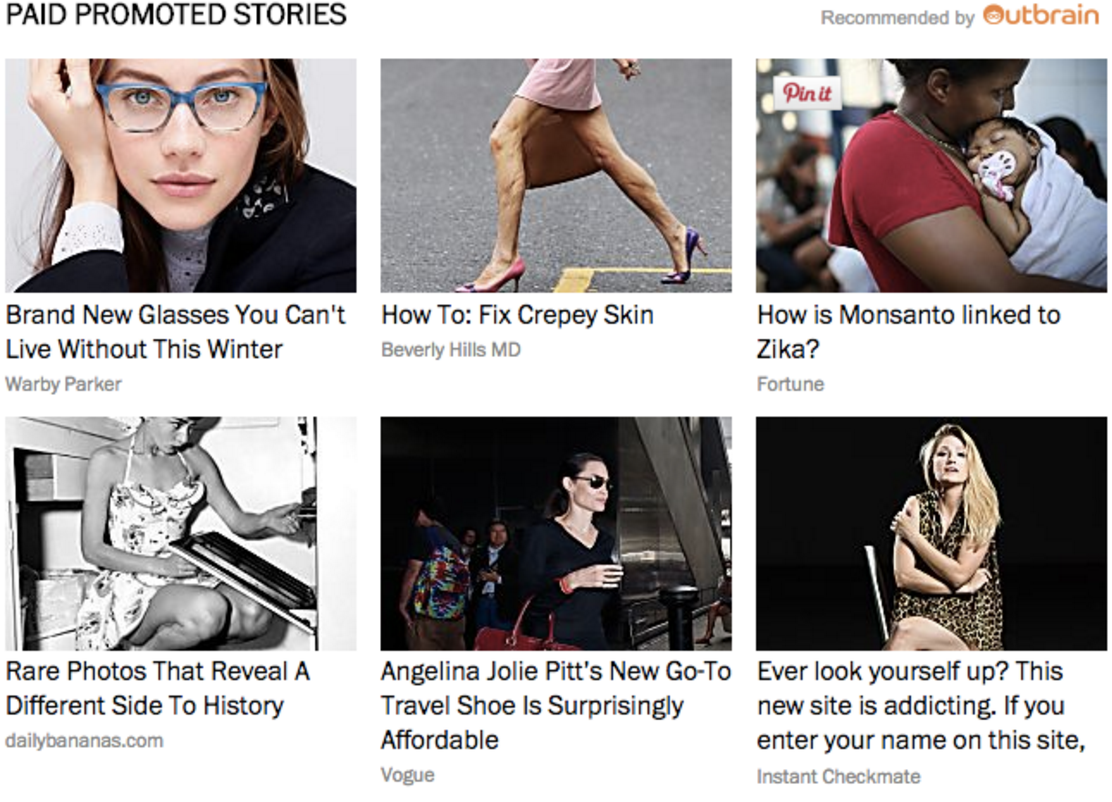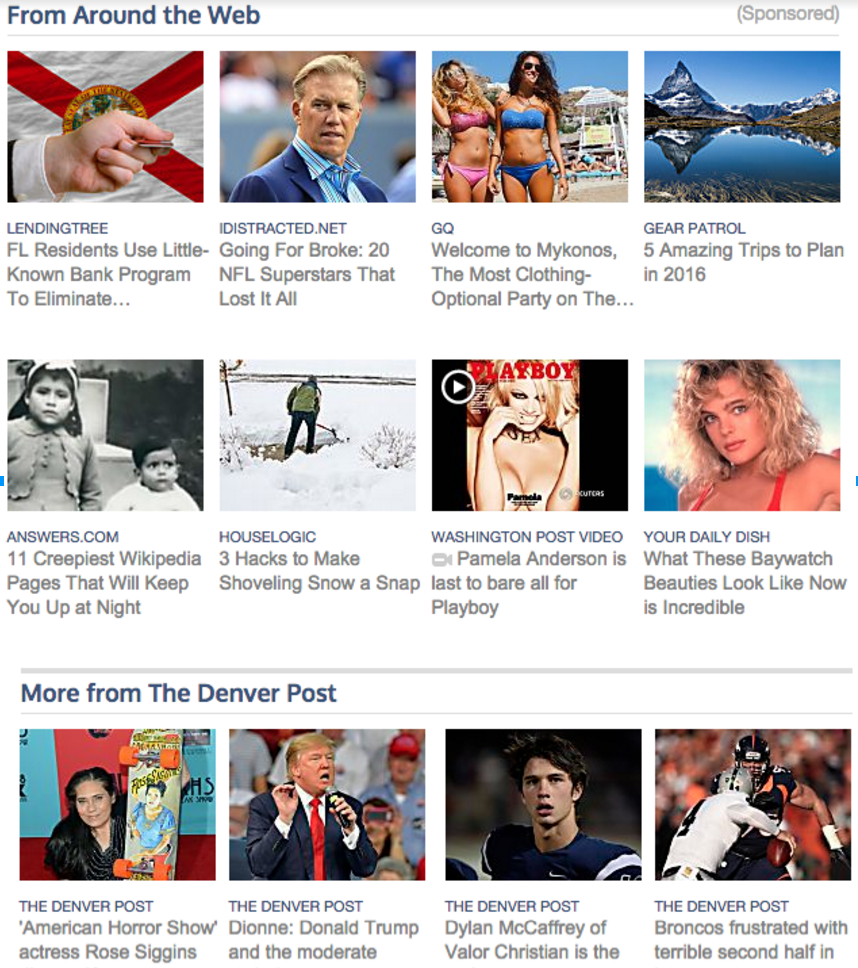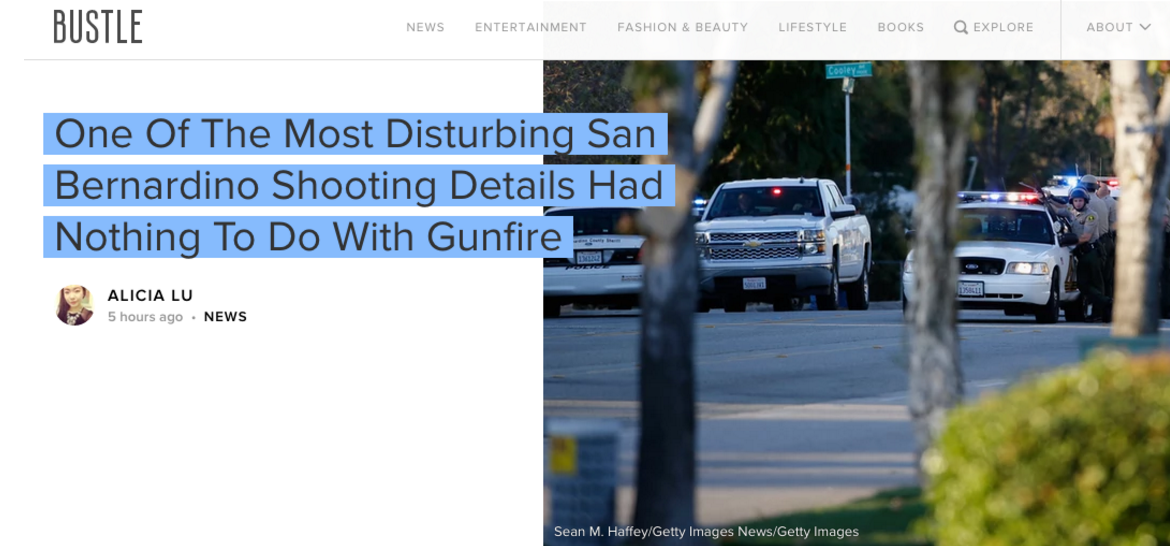Editor’s note: The following has been republished with the permission of the Center for Online Reporting Accountability, which commissioned the article.
It seems like every other day, there’s a new thinkpiece about the scourge of Internet clickbait.
It could be a listicle, a quiz, a puff piece or just something the author thinks is useless. It could have a headline that ends up tweeted by @SavedYouAClick, which takes the guessing out of “you’ll never guess what happens next” headlines.
So before you pen a hot take about Internet garbage or finalize your newsroom’s policy on attention-grabbing headlines, take a minute to go over the following classification system that breaks down the various types of clickbait.
Trickbait
Sites that have little or no original content and use sensational headlines to persuade people to click rely on trickbait. Thanks to recommendation platforms like Outbrain, stories from these sites often appear on more reputable news sites, under or beside that site’s original content.
Example: at the bottom of a Washington Post story, you might see a grid of stories that look like this:

(Screenshot)
Why is this trickbait? It’s so easy to confuse it with The Washington Post’s recommended stories.
Visual trickbait
That last square on the promoted story grid, “Ever look yourself up? This new site is addicting. If you enter your name on this site,” is a special visual version of trickbait.
The image on the grid leads people to believe they will find the story of the woman in the photo, but it has absolutely nothing to do with the article. There are no women mentioned in the story, unless you count the byline, which is “as told to Heidi R.” The link leads to a narrative-style press release for “Instant Checkmate,” a company that has been hit with multiple lawsuits over the past few years, including by the FTC for violating the Fair Credit Reporting Act and by a woman whose mugshot photo was used in an ad.
Using photos of women who aren’t connected to the story objectifies them and turns them into window-dressing. Using images to generate clicks rather than support the narrative of the story is a questionable practice.
Outbrain is the company that often serves this non-Post content on The Washington Post’s site (and many others). Outbrain’s spokesperson told us that the company is “the largest content recommendation platform, serving over 200 billion personalized content recommendations every month on publisher sites like CNN, Time Inc., and New York Post.”
But even publishers that don’t serve extra content in this way struggle to avoid trickbait in their sponsored posts. This is an ethical problem because it creates confusion for readers about when they should trust an outlet’s editorial recommendations and when to ignore them. The Post calls these “paid promoted stories,” which is a step in the right direction toward transparency in advertising. Other outlets call stories like these simply “promoted” or “suggested” or “from around the Web.” The Denver Post doesn’t use Outbrain for its sponsored posts, but it’s even harder to tell newspaper’s real stories from its sponsored ones. Here are the sponsored posts and their recommended posts side by side:

Screenshot, The Denver Post.
Shareable-and-nothing-more-bait
As social media emerged as the dominant distribution method for news, media companies were founded on the mission of creating sharable content for these networks.
Buzzfeed and Upworthy create and curate content that is shared frequently and easy to read. Many such sites mix what we think of as traditional journalism with pure entertainment pieces, (what former Verge editor Joshua Topolsky referred to in The New York Times as the Doritos of journalism) stories that provide instant gratification but have little enduring value.
Buzzfeed, Upworthy, Mashable and others are often maligned for deploying clickbait, though their headlines are usually fairly precise descriptions of what a reader can expect to find in the story. Buzzfeed’s Ben Smith says that BuzzFeed’s goal is to give readers “new, funny, revelatory, or delightful” content. When a reader truly enjoys reading something for entertainment or information, they’ll share it with their friends. A misleading image or an over-promising, suspenseful headline will not get the audience to share the story.
In this example from Buzzfeed, readers know exactly what they’re getting from the story by reading the headline. It’s not a hard-hitting news piece, but it doesn’t pretend to be. It’s a simple, sweet story with a simple, straightforward headline. A Man Made A Huge “Get Better” Sign For His Brother After He Was Diagnosed With Cancer.
Many publishers of substantive information who have to compete in the social environment consider information that is merely shareable to be clickbait. If a story doesn’t pass any of the myriad journalistic tests for relevancy, edification or revelation, or it doesn’t specifically serve the defined geographic audience, then the only reason for distributing it is to get clicks. Hence, clickbait. But if it’s in your organization’s mission to provide simple, delightful stories that entertain the audience, the derogatory label is less appropriate.
Curiosity-bait
Some media, including websites of print publications and broadcast networks, have imitated the original Upworthy style of headlines (although Upworthy itself doesn’t use them anymore) that rely on a curiosity gap. Writing at the time for Vox (he’s now the editor in chief of the Verge) Nilay Patel described these “you’ll never guess what happened next” headlines as a “one-question pop quiz.” The game is guessing the answer to the question (usually implied) of the headline. These headlines are irritating because, Patel said, “the real answer doesn’t live up to the wildest guesses of the reader; no one cares if what happened next is actually boring.”
It’s-not-what-you-think-bait
This type of headline encourages you to click because your curiosity is piqued. The headline has promised you the feeling of surprise, and you click to see whether you are surprised and what the surprise is.
The teaser for a CNN story from December illustrates this. A video bearing the headline “Cop points gun at man’s head, threatens him” was teased with a more alluring — and less descriptive headline: “Cop charged with assault for this.”
These teasers may get audiences to click, but they run the risk of fatiguing readers and eroding trust over time. In this particular story, the teaser headline piques our curiosity, but the actual story is a letdown on two levels. First, it feels distasteful to have wanted to see video of a police assault. Second, once you see what the officer has done (hold his gun in the person’s face) your curiosity is sated and you are likely ready to move on to more interesting content.
Here’s another example:
This Bustle story contains an account of what happened during the San Bernardino shooting, including a look at the suspects, with details pulled from various news sources. The headline does the entire story an injustice by reducing it to the curiosity gap. You click to find out the “most disturbing detail” — the suspects were the parents of a 6-month-old. Truly, though, the most disturbing details of the story are that 14 people were killed. Whether or not the suspects were parents doesn’t compare.

In the spring of 2015, Upworthy co-founder Peter Koechley apologized for “unleashing” curiosity gap headlines on the world. Since that time, they’ve stopped using such headlines and have instituted a new rule for headline writing, editorial director Amy O’Leary said. The rule is simple: “people need to be able to reasonably predict what the story is about.” This doesn’t mean that she expects her writers to “unspool the whole narrative” in the headline, but only that she expects them to be clear in telling the audience what the story is about.
While Upworthy doesn’t write curiosity gap headlines anymore, you can see traces of their former formula all over the Web. Ravi Somaiya argued in the New York Times that when journalism competes with entertainment, “The weapon of choice is often emotion. Specialists optimize and test multiple headlines and pictures. If they land on a successful formula — asking a provocative question, hinting at a profound experience, including a celebrity name — it is quickly echoed by other outlets.”
Sharebait
Example: 70 secrets only your little sister knows about you. These stories are built for sharing. They’re pure entertainment. When media companies begin looking at a more holistic set of metrics and stop looking as much at clicks, they may (and should) begin to look at how often a story is shared. Sometimes, outlets create content purely for sharing; this content is not a news story with a lot of shares, then, it’s often a quiz or listicle that appeals to an audience’s desire to share a piece of their identity with their friends or followers.






